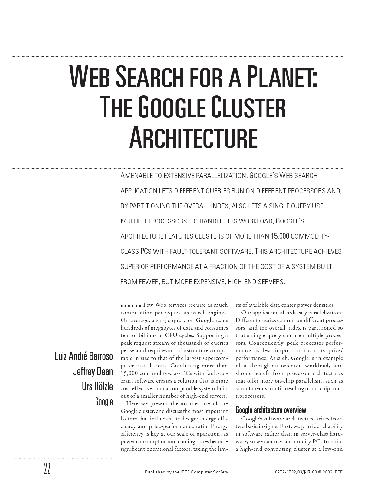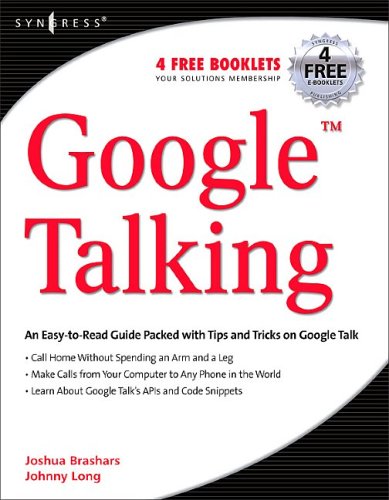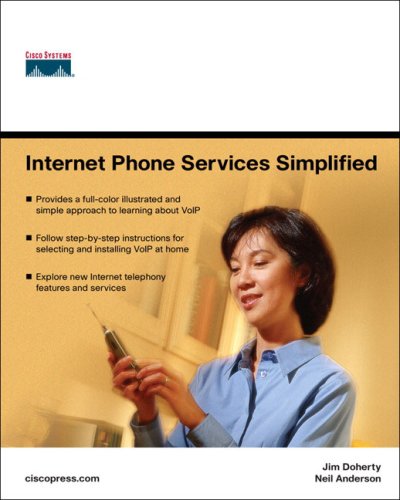Nansi Shi, V. K. Murthy159140049X, 9781591400493, 9781591400813
Table of contents :
Table of Contents……Page 2
Architectural Issues of Web-Enabled Electronic Business……Page 15
Organization……Page 26
Overview……Page 27
Section I: Globalization of E-Business……Page 33
Background……Page 34
Language……Page 35
Culture……Page 39
Laws and Regulations……Page 40
Time-Date and Units of Measure……Page 41
Logistics……Page 43
Other Business Issues……Page 44
Technical Issues……Page 45
Architectural Solutions……Page 46
Future Trends……Page 48
References……Page 49
Appendix……Page 51
Introduction……Page 54
Background: Rapid Emergence of the Digital Divide……Page 55
Global Digital Divide: Patterns And Causes……Page 56
Approaches to Bridging the Digital Divide……Page 57
LINCOS: Little Intelligent Communities……Page 61
Johns Hopkins Global Access System……Page 62
Scalability……Page 63
Security……Page 65
Other Dimensions……Page 66
Future Prospects for the Digitally Excluded Populations……Page 67
National Governments and International Agencies……Page 68
References……Page 69
Section II: Intelligent Portal Architecture……Page 72
Introduction……Page 73
Intelligent Portals……Page 75
Intelligent Portal Deployment and Development……Page 76
Key Component: The Information Broker……Page 78
Tools for Building Intelligent Portals……Page 79
e-Broker……Page 80
References……Page 81
Introduction……Page 83
Expert Database Web Portal Overview……Page 84
Related Work……Page 85
Expert Database Constructor Architecture……Page 87
Web Page Miner Architecture……Page 88
An Example: The Entertainment and Tourism Domain……Page 91
References……Page 94
Section III: Scalability and Performance……Page 98
Introduction……Page 99
Conditional Task Scheduling……Page 101
The ATME System……Page 103
Latency Minimization……Page 105
The Impact of Latency: An Example……Page 106
Ambassadors Concept……Page 107
Semantics of Ambassadors……Page 108
Implementation Status……Page 109
Conclusions……Page 111
References……Page 112
Introduction……Page 115
Server Farms vs. Edge Services……Page 118
Content Delivery Services……Page 119
Publishing Protocol……Page 121
Cookie and Certificate Sharing Protocols……Page 122
Redirection Protocol……Page 124
Dynamic Content Handling Protocol……Page 127
Impact of Dynamic Content on Content Delivery Architectures……Page 128
Overview of Dynamic Content Delivery Architectures……Page 129
Configuration I……Page 130
Configuration II……Page 131
Configuration III……Page 132
Enabling Caching and Mirroring in Dynamic Content Delivery Architectures……Page 134
Impact of Dynamic Content on the Selection of the Mirror Server……Page 136
Related Work……Page 137
References……Page 138
Section IV: Web-Based Distributed Data Mining……Page 140
Introduction……Page 141
Distributed Data Mining……Page 144
Client-Server Model for Distributed Data Mining……Page 146
Agent-Based Model for Distributed Data Mining……Page 147
Hybrid Model for Distributed Data Mining……Page 148
Emerging Technologies and Standards……Page 150
Multiple Service Provider Model of Interaction for Data Mining ASPs……Page 151
Conclusions……Page 152
References……Page 153
What Is Data Mining?……Page 155
Various Data Mining Tasks and Techniques……Page 156
Data Mining in Web-Enabled E-Business Domain……Page 157
Data Mining Opportunities……Page 158
Difficulties in Applying Data Mining……Page 159
Conclusion……Page 161
References……Page 162
Section V: Web Search and Data Retrieval……Page 165
Background……Page 166
Dynamic Features and Dynamic Vector Space……Page 168
Algorithm TW2……Page 169
Document Ranking……Page 170
The Websail System and the Yarrow System……Page 171
The Features System……Page 173
Timing Statistics……Page 174
The Commercial Applications……Page 175
URL References……Page 176
References……Page 177
Requirements of Web Search Engines……Page 180
Search Engine Structure……Page 181
Search and Ranking Software……Page 182
Hyperlink Exploration……Page 183
Relevance Feedback……Page 184
Metasearches……Page 185
Sql Approaches……Page 186
Content-Based Multimedia Searches……Page 187
Major Search Engines……Page 188
Future Directions……Page 190
References……Page 191
Overview of the Architecture……Page 195
Review of Multimedia Content-Based Retrieval Models……Page 196
Keyword Search……Page 198
A Model for Multimedia Semantic CBR……Page 199
How a Query is Processed in this Layer……Page 200
Layer II: The Proxy Server……Page 201
Layer III: The Departmental Local Caches/Archives……Page 202
Layer IV: The Agents……Page 203
The Home Base……Page 204
The Mobile Agent Instances……Page 205
Discussion……Page 206
References……Page 207
Introduction……Page 210
Online Store Models……Page 211
Navigation in Large E-business Sites……Page 214
Characteristics Influencing Navigation……Page 216
Trust and Usability……Page 218
Design Issues for Checkouts……Page 219
References……Page 220
Section VI: Web Information Systems (WIS) Development: Design, Environment and Standards……Page 222
Introduction……Page 223
Operational Models for INE……Page 225
Suitable Model for E-Business INE……Page 227
Mobile Transactions: Their Features……Page 228
Subjunctive Mode……Page 229
Requirements For E-Business Transactions……Page 230
Workflows, Agents and Concurrency……Page 231
Relaxing Serializability Criterion……Page 232
E-Shopping Cart Model……Page 233
Software Tools……Page 234
References……Page 235
Introduction……Page 237
(3) Changes in IT Strategy……Page 238
Linear Models (Including System Development Life Cycle and Waterfall)……Page 239
Iterative Models (Including Prototyping, Spiral, Rapid Application Development)……Page 240
Parallel Models (Including Alternative Path or Ad Agency Approaches)……Page 241
Rapid-Response Models……Page 242
Research Step 3: Developing a Framework for E-Business Development Methodology……Page 243
Organizational Variables……Page 244
Team Variables……Page 245
Analysis and Discussion……Page 246
Conclusion……Page 247
References……Page 248
Introduction……Page 250
Background: Web Architectural Modelling……Page 252
Functional Architecture……Page 255
Improving Architectural Models……Page 257
Future Trends and Conclusions……Page 259
References……Page 260
Introduction……Page 263
Background……Page 264
Content Information and Presentation……Page 265
Information Space Navigation and Accessibility……Page 266
User Interface and Support……Page 267
Cognitive Styles……Page 269
Prior Knowledge……Page 270
Engaging the User Model in System Design……Page 271
Conclusion and Future Directions……Page 272
References……Page 273
Introduction……Page 276
Web Infrastructure and Web-based Applications……Page 277
Web Infrastructure and Web Application Servers……Page 280
Existing Models for Web Application Development……Page 281
A New Model and Architecture for Web-Based Applications……Page 282
The Web-Based Application Conceptual Model……Page 283
The Extended Web-Based Application Architecture with Execution Segmentation……Page 284
Task Partitions: Supporting the Continual Evolution of Web-Based Applications……Page 285
Relationship to the Model-View-Controller Pattern……Page 286
A Support Environment for Web-Based Applications……Page 287
References……Page 288
Introduction……Page 290
Electronic business is more than just e-commerce!……Page 291
Limiting Factors of Electronic Business……Page 292
The XML Standard Digital Glue for Inter Operability……Page 293
XML Adds Meaning to the Data and is Easy to Learn……Page 294
Why Traditional Databases are not Ideally Suited for XML……Page 295
Mismatches Between XML and RDBMS Technology……Page 296
From CSS to XSL……Page 297
XSLT -eXtensible Stylesheet Language Transformations……Page 298
XPointer……Page 299
Xml-Based Standards for Electronic Data Interchange……Page 300
Conclusion……Page 302
References……Page 303
Additional Information Sources……Page 304
Section VII: E-Marketing and Virtual Marketplace……Page 305
Introduction……Page 306
What is Negotiation?……Page 308
Negotiation as a Transactional Paradigm……Page 309
Planning, Reasoning and Negotiation……Page 310
Example……Page 312
Specification to find the shortest path……Page 313
Negotiation Termination Detection……Page 314
Modeling E-Market……Page 316
References……Page 317
Introduction……Page 319
General Marketplace Architecture……Page 320
Control Center……Page 321
Business Center……Page 322
Software Agents……Page 323
Buyer Agent……Page 324
Proxy Agent……Page 325
Client Application and Airline Management……Page 326
Negotiation Session……Page 327
Security, Trust, and Privacy……Page 329
Agent Identification……Page 330
Conclusion and Future Work……Page 332
References……Page 333
Introduction……Page 335
Log File Analysis……Page 337
Web Servers add-ons……Page 338
From Analysis to Data Mining Techniques……Page 339
Construction of Model……Page 340
Data Mining Tools and Algorithms for E-Marketing……Page 341
Scalability Issue……Page 342
References……Page 343
Introduction……Page 346
Differentiation Change……Page 347
Agent Frameworks……Page 348
Owner & Butler……Page 349
Trade Services……Page 350
Expert Agent……Page 351
Product Evaluation Methodology……Page 352
Agent Learning……Page 353
Position of Trade Services……Page 354
Results and Discussions……Page 355
Conclusion……Page 356
References……Page 357
Section VIII: Security Architecture……Page 359
Introduction……Page 360
Background……Page 361
Overview of the SAFER Architecture……Page 363
Authentication Process……Page 364
Generation of Keys……Page 366
Authentication of Host by Agent……Page 367
Sending Signed Agent to Destination……Page 368
Discussions……Page 369
Limitations of Our Infrastructure……Page 370
References……Page 371
What are Auctions?……Page 374
Existing Problems……Page 375
OAS versus Physical Auction System……Page 376
Categories of Electronic Commerce and Various Forms of Auctions……Page 377
Mechanisms of Online Auctions……Page 378
Security Consideration……Page 379
Certification of Participants……Page 381
Establishing Payment Systems……Page 382
Conclusion……Page 383
References……Page 384
Section IX: E-Business Applications……Page 386
Introduction……Page 387
Characteristics of Digital Libraries……Page 388
Issues Facing the Content Organization in Digital Format……Page 389
Copyright and Intellectual Property……Page 391
Cataloguing and Indexing……Page 392
Access Control……Page 393
E-Commerce in Libraries……Page 394
Charging Models for Digital Libraries……Page 395
Pay Now or As You Use Model……Page 396
XML Might Hold the Key……Page 397
References……Page 398
Introduction……Page 400
Technologies to Enable M-Business……Page 401
Technical, Business and Legal Issues in M-Business and Their Ramifications……Page 403
Main Components……Page 405
System Operation……Page 406
Related Work……Page 407
Related WAP Applications……Page 408
Summary and Conclusion……Page 409
References……Page 410
Chapter 4: Expert Database Web Portal Architecture……Page 413
Chapter 6: Integration of Database and Internet Technologies for Scalable End-to-End E-commerce Systems……Page 414
Chapter 14: System Development Methodologies for Web-Enabled E-Business: A Customization Framework……Page 415
Chapter 20: Virtual Marketplace for Agent-Based Electronic Commerce……Page 416
Chapter 24: Security and Trust of Online Auction Systems in E-Commerce……Page 417
Chapter 26: Electronic Business Over Wireless Device: A Case Study……Page 418
Chapter 10: World Wide Web Search Engines……Page 419
Chapter 23: An Architecture for Authentication and Authorization of Mobile Agents in E-Commerce……Page 420







Reviews
There are no reviews yet.